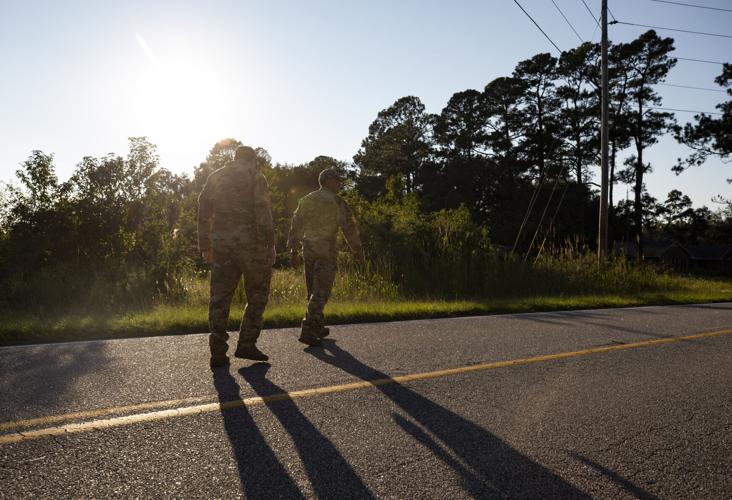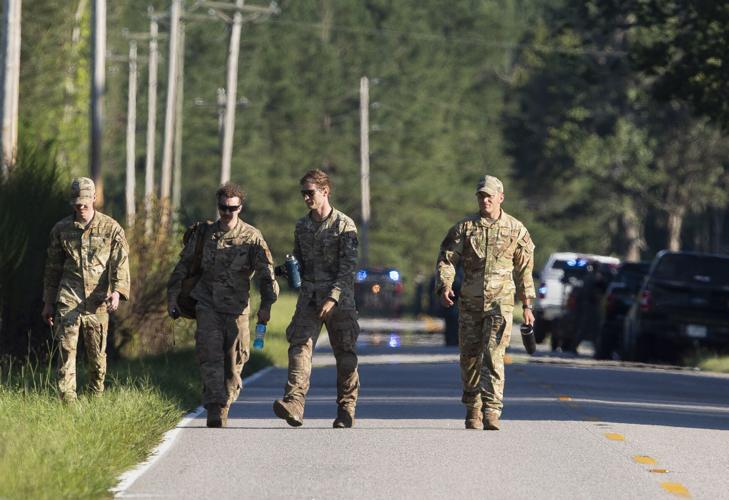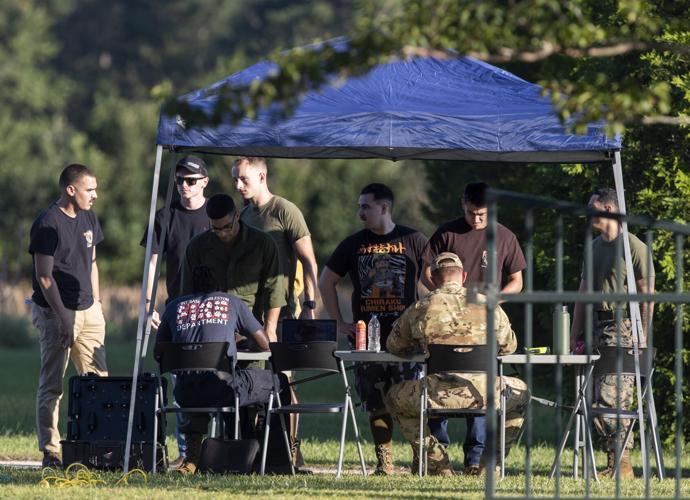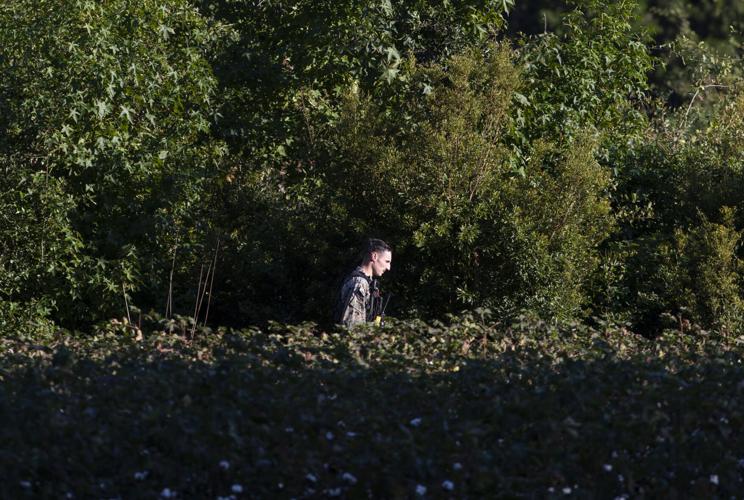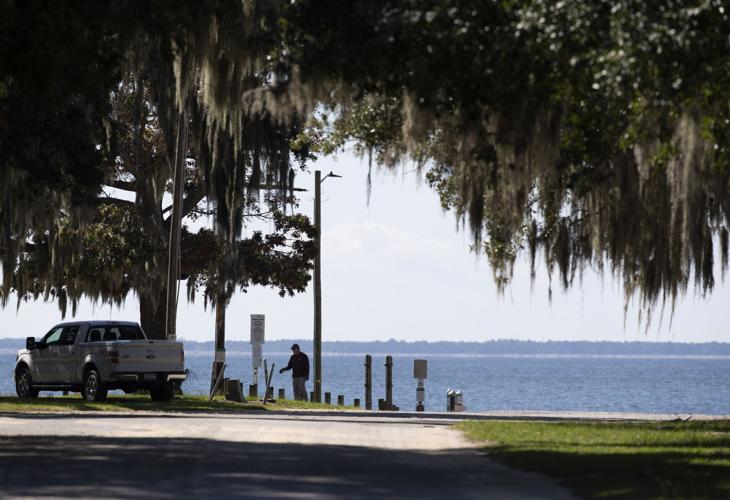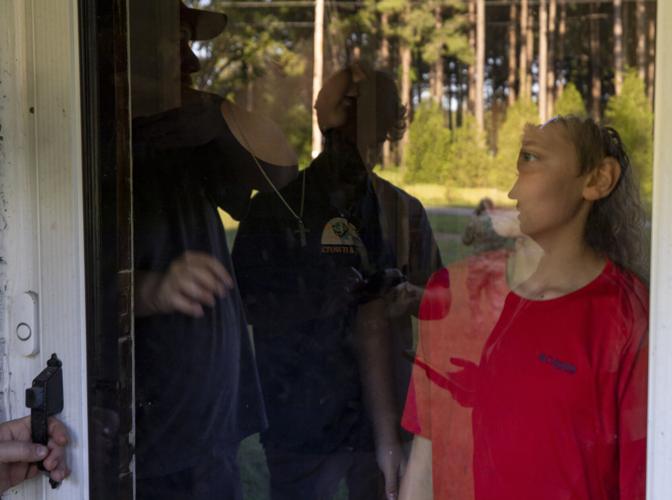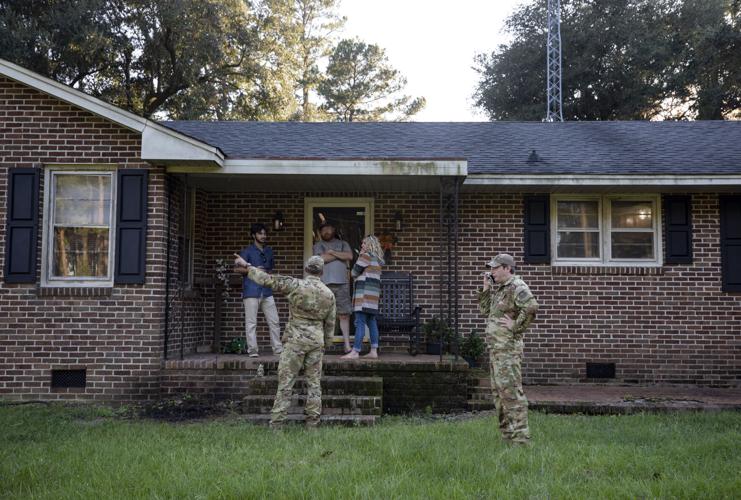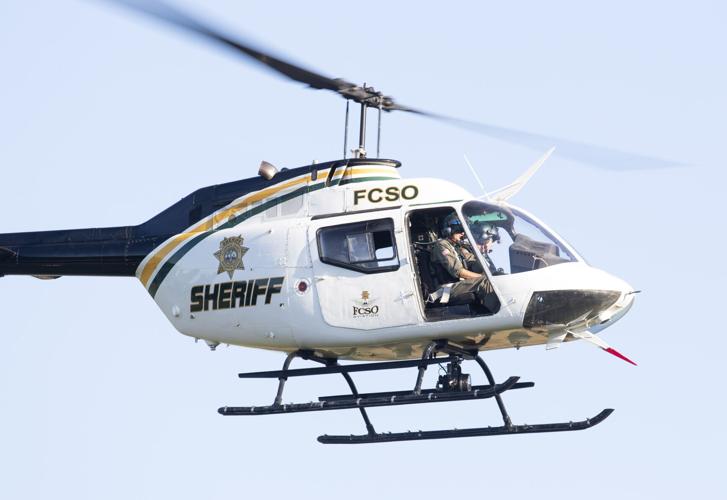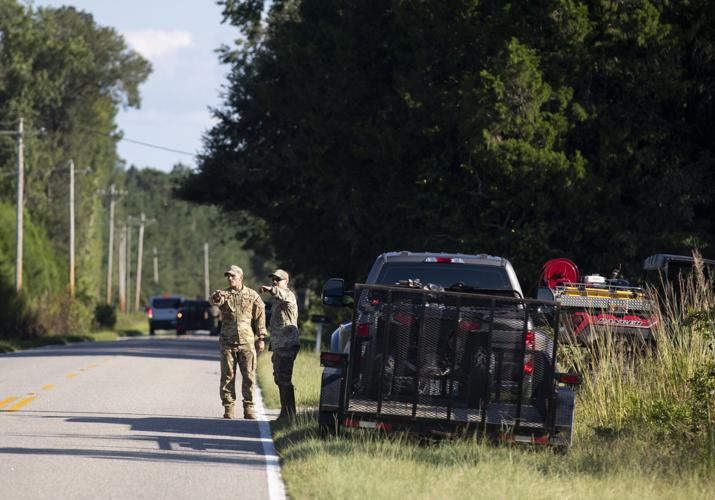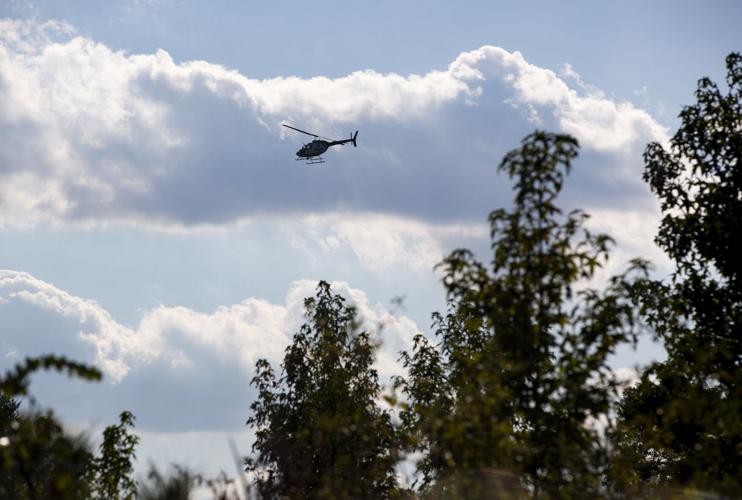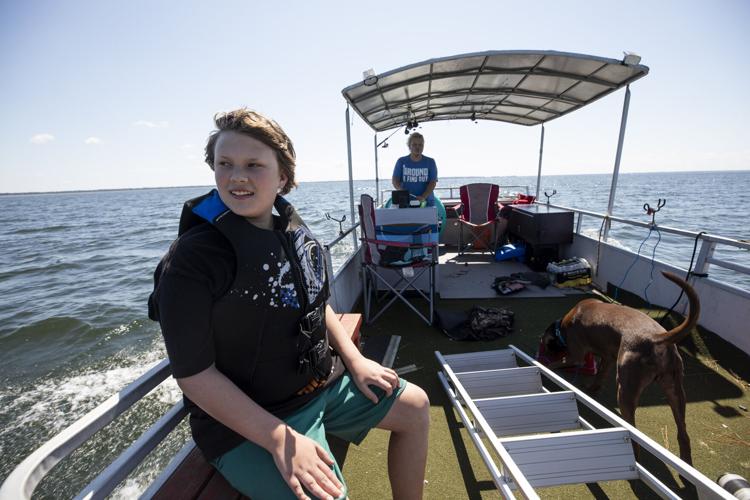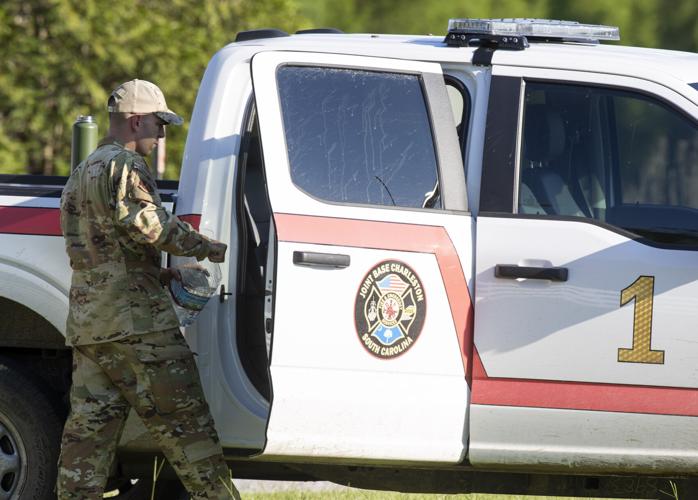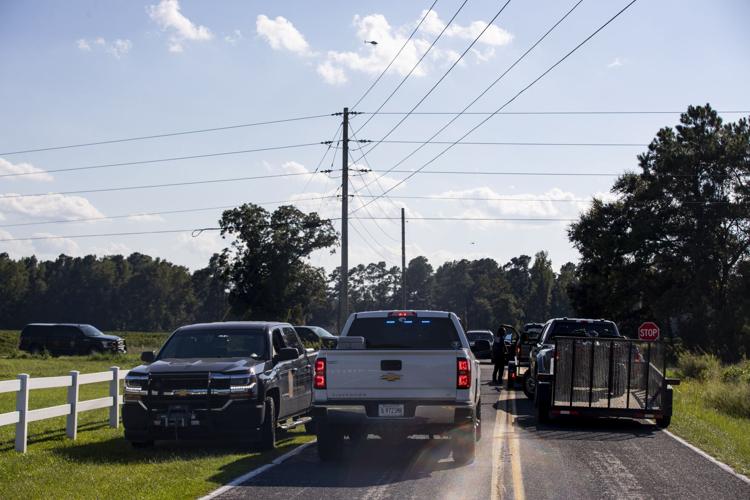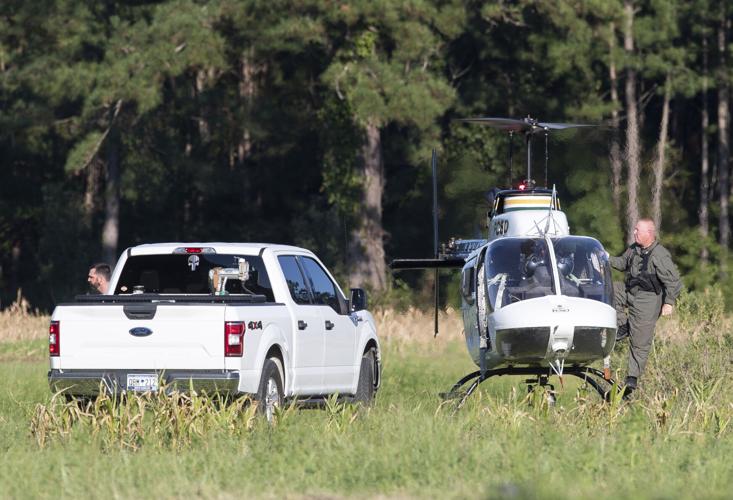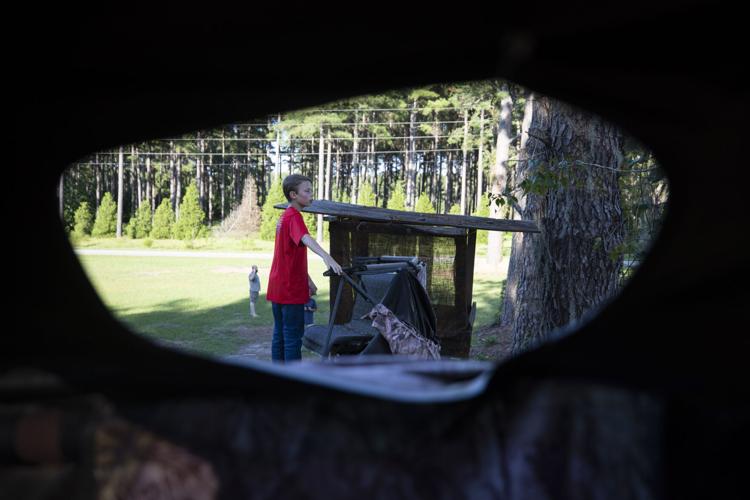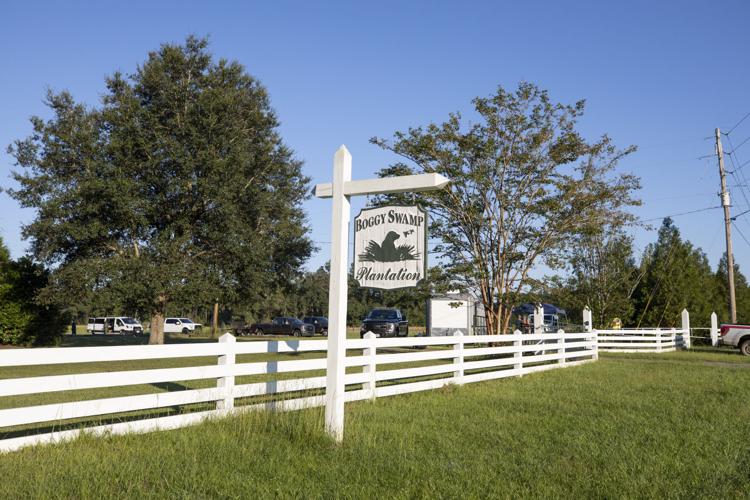STUCKEY — The hunt for a missing Marine Corps fighter jet ended with wreckage found in a rural expanse of farmland and swamp on Sept. 18 after a massive search across South Carolina for the elusive $90 million plane.
An amalgam of military, law enforcement and civilian searchers scoured a sprawling expanse from the Lowcountry to the Pee Dee before finding a “debris field” from the downed F-35B Lightning II fighter jet in Williamsburg County a day after its pilot ejected. The pilot landed safely in a North Charleston neighborhood, but the stealth aircraft proved to be a much tougher find.
Air Force Chief Master Sgt. Walter Shutler told The Post and Courier just after 6 p.m. that authorities had located the wreckage.
“It will take days to get this thing dug up,” Shutler, the incident commander, said.
The unmanned plane was found more than 63 miles from the North Charleston backyard where the pilot landed more than 24 hours earlier.
Meanwhile, the Marine Corps’ acting commandant ordered the branch’s aircraft grounded for two days.
Gen. Eric Smith instructed the Marines’ aviation leaders on Sept. 18 to stand down and spend the time going over safety procedures with their units. The F-35B incident was the Marines’ third aviation mishap in six weeks.
Search planes from the U.S. Navy and the Civil Air Patrol flew in low grids across much of South Carolina throughout the day, according to FlightRadar24 data. The search appeared to reach as far north as Marion and as far south as Georgetown — a distance of about 50 miles end-to-end. The planes flew for hours, moving back-and-forth above Williamsburg and Florence counties for much of Sept. 18.
The search coalesced late in the day around an area off Old Georgetown and Bartells roads in Williamsburg County, near Boggy Swamp. Military and emergency vehicles descended on the area with patrols around 5:40 p.m. A sheriff’s office helicopter soon landed, and crews began setting up a tent and chairs — an early indication they planned to be there a while.
Shutler emerged with news of the find a short time later.

Airmen from Joint Base Charleston speak to a family living right next to the site of a crashed F-35 about the operation to recover the jet and requests for the family in Williamsburg County on Monday, September 18, 2023. Henry Taylor/Staff
The search initially had focused on the areas around Lake Moultrie and Lake Marion, based on the last known location of the unmanned jet. Flying in autopilot mode with a faulty transponder, the jet then blasted off into the unknown with little indication as to when its fuel would run out or where the expensive piece of military hardware would come down.
Joint Base Charleston indicated that it was coordinating an air-and-ground sweep for the plane with Marine Corps Air Station Beaufort, the 2nd Marine Aircraft Wing out of MCAS Cherry Point, Navy Region Southeast, the Federal Aviation Administration, the Civil Air Patrol, as well as local, county and state law enforcement across South Carolina.

Pilots get out of a Florence County Sheriff’s Office helicopter after locating the position of an F-35 that crash landed the previous day in a nearby field in Williamsburg County on Monday, September 18, 2023. Henry Taylor/Staff
While military officials applauded the teamwork involved, others grew frustrated by the lack of answers about the plane’s disappearance. The incident marked at least the 10th mishap involving military aircraft in South Carolina since 2005, including crashes that killed five people.
U.S. Rep. Nancy Mace, R-Isle of Palms, told The Post and Courier she was increasingly frustrated by what she described as a lack of transparency from the military in regard to the episode. Representatives from the Marines briefed her office earlier on Sept. 18 but had little information to share. At that point, she said, they didn’t know whether it was in the air, water or somewhere else.
“This is a public safety issue,” she said. “The public ought to know.”
Cause of ‘mishap’ unknown
Joint Base Charleston said the cause of the jet’s misadventure remains under investigation and no additional details would be released to “preserve the integrity of the investigative process.” Base officials said they were turning control of the crash scene over to the Marine Corps and they urged people in the community to keep clear of the area.
Marine Capt. Joseph Leitner at the Beaufort air station confirmed that the plane was not carrying live missiles when it disappeared.
“There was no air-to-ground or air-to-air ordnance aboard the aircraft,” he said.
The episode began on the afternoon of Sept. 17 as the F-35B from Marine Corps Air Station Beaufort flew through North Charleston and became involved in what Joint Base Charleston described as a “mishap.”
The jet is unique in its ability to both break the sound barrier with a top speed of more than 1,200 mph and to hover to descend vertically on the smallest of landing areas like a helicopter. But the F-35 program has been plagued by problems, cost overruns and delays, requiring the military to keep older jets in service longer than planned.
Another F-35B based in Beaufort was involved in a crash in September 2018 on Little Barnwell Island. That pilot ejected safely, as well. The incident, blamed on a faulty fuel tube, marked the first crash for the F-35 Joint Strike Fighter program. Afterward, the U.S. and other nations grounded the entire fleet for up to 48 hours to check the jets’ fuel tubes.
It remains unclear what caused the pilot to bail out Sept. 17. The pilot was picked up near South Kenwood Drive in North Charleston and transported to a local medical center. The pilot’s condition was stable, according to the Joint Base Charleston.
Photos: Search for missing F-35 from Lake Moultrie to rural Williamsburg County
After the pilot of an F-35B Lightning II from Marine Corps Air Station Beaufort ejected and landed in suburban North Charleston on Sunday, September 17, 2023, a scramble to locate the missing jet began. The fighter was located in rural Williamsburg County after accounts of it’s location emerged from Lake Moultrie to Lake City.
North Charleston police were called to a home on the street at 1:46 p.m. after the pilot landed in a resident’s backyard, according to an incident report. Security personnel from Joint Base Charleston arrived and took possession of the pilot’s parachute and other military gear. But a search was still underway for the cockpit seat, the report stated.
The pilot landed on a cut-through street near the Midland Park and Stall roads and an entrance to Joint Base Charleston, where single-story homes are ringed by drainage ditches and chain-link fences.
Residents were in the dark about how the pilot came to land in their neighborhood.
One man said he didn’t know anything had happened until his wife’s friend mentioned seeing their block on the news.
Closer to where the pilot landed, Kaye Moore said she’d been hanging out with a neighbor, and they had gone out to see what the commotion was: She saw firetrucks, ambulances and police cars blocking the road.
Barbara Watkins, a 50-year resident of the street, said she’d been lying down when first responders swarmed her block. She got up to see what was going on when she heard her next-door neighbors’ dogs barking. Then she saw officers collecting something in the backyard of a house across the street. Later she saw military officials walking around in uniform.
“I didn’t know what happened until the guys went back there and picked up a parachute,” Watkins said. “I said, ‘That’s a parachute. What’s a parachute doing here?’ ”
A second aircraft on the mission returned to Joint Base Charleston without incident.
Charleston International Airport, which shares runways with Joint Base Charleston, was notified by the military of the mishap, but no flights were impacted, spokesman Spencer Pryor said. The military generally doesn’t alert the airport about routine training flights beforehand unless there is a need to close the airspace, he said.
It remains unclear what sort of a bead air traffic controllers had on the jet as it raced through the skies over North Charleston and the state’s busiest airport. The Federal Aviation Administration offered no immediate comment and referred questions about the incident to military officials.
Danger in the flight path?
As the pilot drifted down to the Midland Park Terrace neighborhood, he or she would have come perilously close to the Charleston airport’s primary runway.
In one direction, the traffic pattern sees departing planes roar above its modest single-story homes as they bank away from the airport. In the other, arriving planes’ descent comes within a half-mile of where the pilot landed.
The pilot ejected during a brief gap in Charleston’s air traffic Sept. 17, according to Flightradar24 data. But a handful of commercial jets were making their approach to the airport when police officers were dispatched to South Kenwood Drive.
Two minutes after police logged the call about the pilot, a Delta Air Lines flight from Boston was less than 1,500 feet off the ground when it turned away from the airport and started climbing, the Flightradar24 data shows. After two more minutes, an American Airlines flight from Charlotte also aborted its approach. Both planes later landed without incident.
A short time later, some 60 miles to the northeast, the Mckenzie family was having a birthday party for Madison, who turned 9, in their house on Old Georgetown Highway in Williamsburg County. Rain was falling around 2 p.m. Sept. 17 outside the brick house with a backyard with dogs, chickens, turkeys and goats along with a field of cotton and hunting towers on its side.
It was around that time they heard a boom. The whole house shook.
“That scared us, I tell you what, it was loud. I thought lighting had struck,” said Justin Mckenzie, Madison’s father. The blast was so strong that the back door had flung open.
Parts of the missing F-35 were found the next daay behind the Mckenzie’s house, with the area sectioned off by Marines. Military members present on Sept. 18, including personnel from Joint Base Charleston, told the family to not venture any further onto their property than where their animals are located.
The house across from them is now the site where the military set up as they work to clean up the aircraft.

James Lawrence (left) and Carla Fisk (right) scope Lake Moultrie to look for an F-35 that allegedly anded in the area in Bonneau on Monday, September 18, 2023. Henry Taylor/Staff
Brett Abbamonte, a former Marine pilot who lives in Mount Pleasant, has flown the same model F-35B that went missing. He never had to eject, he said, but those who took that step did so to escape a catastrophic failure. Autopilot in the F-35 can be set to maintain a certain altitude or a certain speed while unmanned.
“I mean, usually if you’re going to eject from an aircraft then there’s something very wrong with the plane,” he said. “There could be an issue where you would want to get out of the airplane and then the plane could continue to fly for a short period of time.”
Abbamonte said it’s too early to speculate on a potential cause, but a safe pilot and no reported injuries count as good news.
Jason Cato and Henry Taylor contributed to this story.


